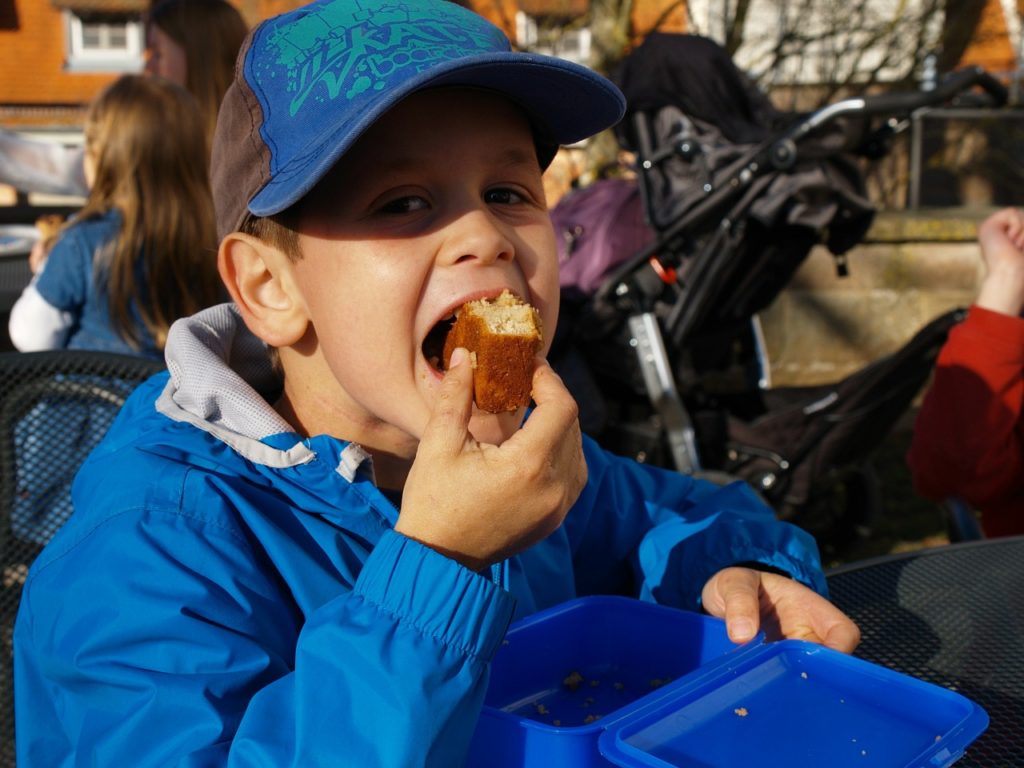A few years ago, a Vice Principal at the Catholic School my children used to attend shared his experience teaching at a summer youth program in an inner city school compared to one in a pretty affluent suburb in the same state.
On the first day, during a short break, the counselors instructed the children that they’d have an hour to rotate on different play stations but something interesting happened then.
In the city program, without prompting, after being told to play, the kids there scattered, grabbed balls and sidewalk chalk, formed teams on their own for playing tag and snatched up limited supply of jump ropes and hoola hoops before the last could be swooped up.
But on the other side of town, with the perfectly manicured lawns, white picket fences and two car garages, where organized recreational league sports, ballet and karate lessons and carpools instead of bus rides are norm, no one moved.
The children stood around waiting.
The concept of just scampering off to figure out something to do was not the norm. After a few minutes of stillness, it occurred to the staff that the kids were waiting for more instructions. It’s what they’re used to. The counselors divided up the children into groups and assigned them play stations and groups.
I found that unplanned social experiment fascinating, but sad at the same time because my kids would be in the camp with the little robots waiting for instructions.
Lately, from the reports that come out and just general observation of Zen Y and Z, it appears that we may be losing the war between intellectualism and ‘keep it simple’ because, well, it’s just easier to be told what to do and to follow instructions than to come up with something to do on your own.
Independent thinking isn’t necessarily rewarded in a ‘teach to test’ environment where there is little time for traveling off the curriculum and exploring the fields and getting lost in the weeds.
A lot of us adults aren’t too unsimilar to Generation Zers. We are content following social trends, our favorite singer or entertainer on social media, and we chime in to comments on popular topics and generally, agree with conventional thought. We want to be liked, and being agreeable is an easy way to accomplish that goal.
In high school, it’s easier to go along with the clique and hang on the words of the leader of the pack.
I imagine that it has always been the case for each generation. Succumbing to social pressure to fit in is innate to humans at any stage of life, even.
In schools, children are taught to read, perform mathematic equations, memorize history material in a school book and to cobble paragraphs together based on Wikipedia or online facts and turn in reports.
There is insufficient devotion in the curriculum to teach critical and analytical thinking. There are electives for that, I guess. So it goes, children who are naturally talented with words and who have a sincere and deep interest in literature, the arts or physical sciences, will likely do okay.
But everyone else will just settle. I wish we didn’t have to settle.
In my home, I have three children: two who are creative, thoughtful, introflective and responsive to others. They can quickly analyze new situations and promptly adjust. They are great with words, creatively write or draw every day.
My other kid is not as motivated and a bit scattered, and doesn’t really focus as much and would prefer to not have to do extra thinking or intellectual activity, outside of reading sci fi series, on his days off.
I know I shouldn’t compare my kids but I want this other kid to be better at dissection a problem or challenge presented to him and come up with a creative solution or to plan that challenges conventional thought, wisdom or trends
Critical and independent thinking skills are crucial, not just for term papers in college but for life, in general.
I think it is essential to be able, for example, to judge a political candidate by comparing his or her campaign rhetoric from their voting pattern, to be able to read between the lines and understand subtext, covert actions and words and figure out if someone is being disingenuous. There are usual social and word clues that give it away if you’re attentive. But there is so much non-real human face to face interactoins these days, that the skill of interpersonal communication is really lost on many among today’s youth.
It’s not too late. I’m convinced!
My kid and all of the children soon will be in charge, running companies and the government and we cannot afford to shrug it off as just something that’s changed.
I wanted to come up with three concrete things that parents can do to encourage and nurture critical thinking in their children and I came up with one and asked my two creative ones to give me an idea on how to cultivate free thought and broader perspective in children.
Idea 1: Encourage Role Play, and often. My suggestion. Pretend play stretches a child’s imagination. She is forced to come up with new scenarios, invent characters and dialogue. All of these activities encourage creative thought which in turns helps a child learn how to anticipate and come up with alternatives. Building blocks for logic and reasoning later on in life.
Tools: My daughter plays with My Little Pony ponies and in fact, there is an enourmous cottage industry of role-playing on YouTube and my daughter watches hours of it if you let her. But pretend play has helped her expand her vocabulary and her horizons.
I don’t want to be gender divisive, but little boys do, in fact, enjoy playing with toy soldiers and imagining battles for their pieces, plastic dinosaurs and stuffed animals. They too should be encouraged to engage in this type of play.
Online Tools: There are a couple of mobile apps out there that involve role play. My daughter likes the Sofia the First: Story Theater app, Toontastic and Telestory apps are excellent. For older teens, Second Life apps are also cool for creative playing.
Teens: You teen may be too old for playing make believe, but you can encourage him to audition for the school or town play. If her school has an Odyssey of the Mind club, encourage her to join.
All of these activities are excellent brain developing ones.
Idea 2: “Take something. Take another thing. And make something new.” My daughter’ s suggestion. To implement this suggestion for the physical world, you can give a child random objects and ask them to either build something that already exists out of it or make a new invention. An empty toilet paper roll, yarn and a stick can be used to make a fishing poll or a pulley, for example. It’s about challenging them to think creatively.
Online Tools: Here is where video games like Minecraft actually come in handy. That game is about a virtual world. Players acquire tools along the way to help them build virtual worlds. Similar building and invention games are great.
Teens: For a teenager, take him or her to a comedy Improv show and later at home have Improv with the family. Play charades. These are all part of creating something out of nothing or something that is given to you unexpectedly that may not fit. Making it fit is the brain teaser.
“Start Little and Progress” –My almost 12-year old son’s suggestion. Think of that cliché about Rome not being built in a day. You’ll have to start with developing basic skills before expecting much otherwise, you’ll fail out the gate. For example, you may ask your child to write a story, but first he has to come up with characters, then have them decide on a backdrop, then add scenes and scenarios. Make him write a first chapter of a story one day. Then have him pick back up and develop the story from there. And so on, until the process of coming up with a story becomes natural.
Online Tools: Games that have levels and progress help a child develop a mastery of the tasks. Similarly, education games like IXL Math or other learning apps gradually increase the difficulty as they go along.
Teens: A teen can be tasked with reading a novel, then a series in a novel and then another. Split up an assignment into tiny sections and then make the amount of work for each section gradually increased. That’s an exercise that is also good for those with ADD and other attention and focus deficiency issues. They shouldn’t be given too much stimulus to comprehend at once.
Hopefully, these tips my children and I came up with will help your journey to help that not-so-creative little thinker in your house. Good luck, parents!
Photos: Picnoi

















